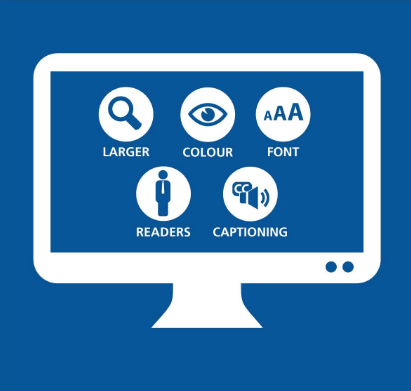Techniques for Creating Accessible Multimedia

The trend of digitizing technologies continues to grow worldwide. Millions of websites use multimedia to increase sales of their products. Multimedia provides an extensive source for its audience, which includes information in the form of text, graphics, audio, video, podcasts, and animation.
Many organizations also rely on multimedia to communicate with their customers. Unfortunately, most of them are not providing accessible content, which can pose significant barriers to people with disabilities. Companies that take into consideration the needs of their customers with disabilities when designing and developing websites will reach a wider market, create innovative products, and deliver a better service for everyone.
Digital accessibility is also a regulatory requirement. Legal cases have been launched against organizations that excluded users who may be deaf, visually impaired, or have any other disability. We do have universal guidelines—WCAG 2.0 (1.2) and Sec 508 [1194.22 (b)]—to support accessible multimedia.
What about the needs of the hearing impaired? Your multimedia can still be accessible to them by using captioned videos. All dialog and important sounds are turned into written captions that are then time-synced to the video.
Audio files do not need captions—instead they should have a transcript. A transcript is a text file that contains a typed version of the whole conversation that was said in the audio file. For people who may need to read the content more slowly or to reread it or who are easily distracted by what’s happening on the screen, they can focus on the text transcript to get better access to the information.
Transcripts can be especially useful to those who have cross disabilities, such as those with deaf-blindness, who can read and review the whole conversation from the audio file through Braille display.
If you are embedding a video or audio file in your content, make sure that it doesn’t begin to play as soon as it loads. Auto start can be frustrating and disorienting. Make sure player controls are accessible through the keyboard and that all contraols are properly labeled so that they can be identified by a screen reader.
If you are making presentations through video, make sure important textual information has sufficient contrast, and any information represented through graphs, flow diagrams, etc. should be explained to users.
In addition to the above stated techniques, it may be beneficial to describe motions, gestures, or other movements that were not spoken of in the video. An audio description can be a useful tool for helping non-sighted users further understand what’s happening in audio or video.
While creating accessible multimedia has explicit benefits for organizations, the importance of creating accessible content will continue to rise as more people with disabilities use the latest consumer technologies.

